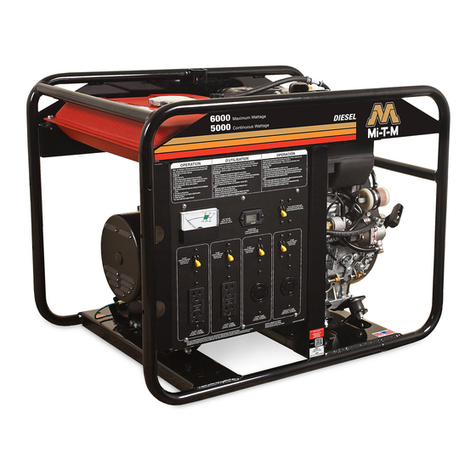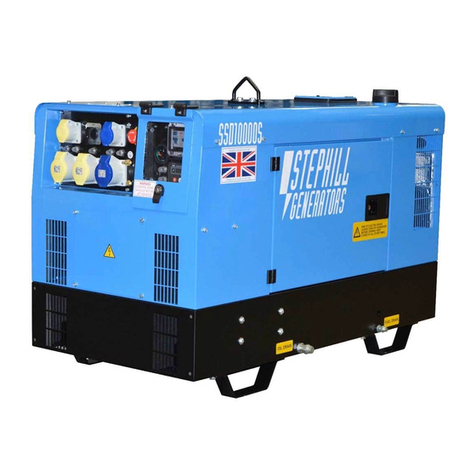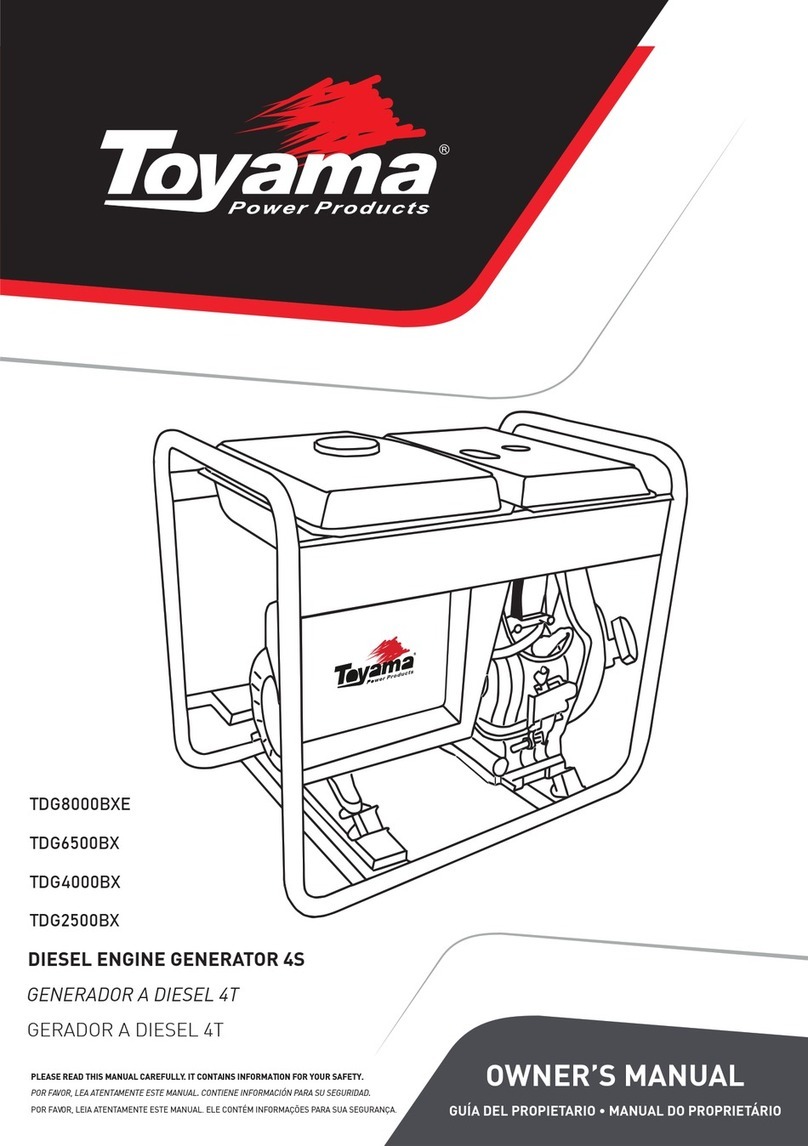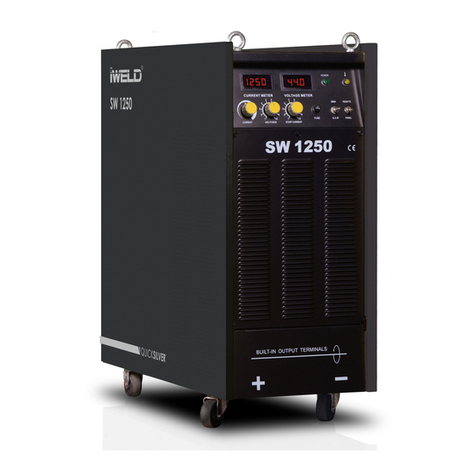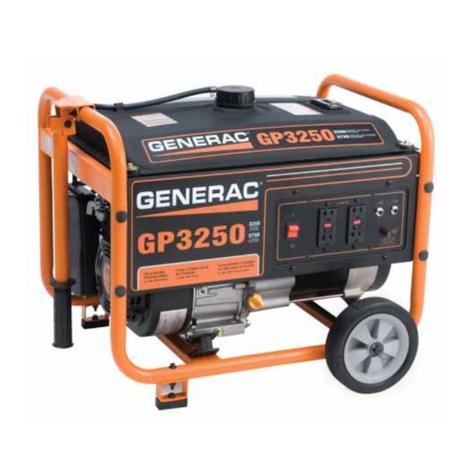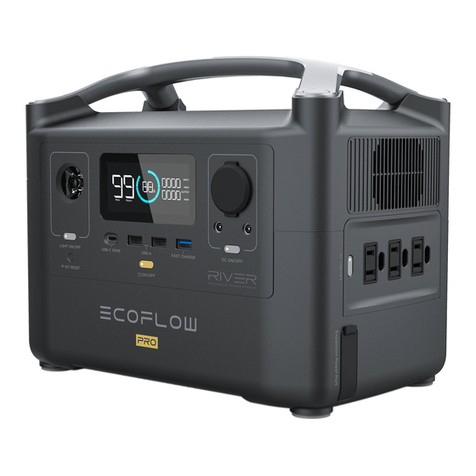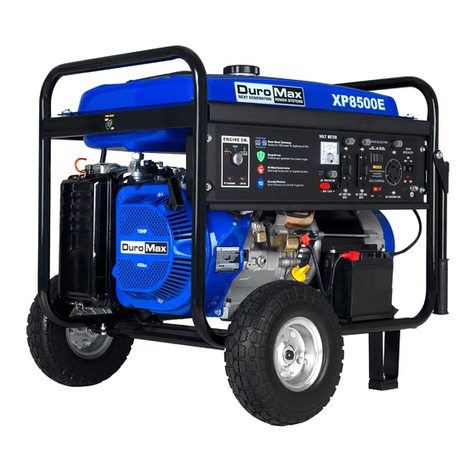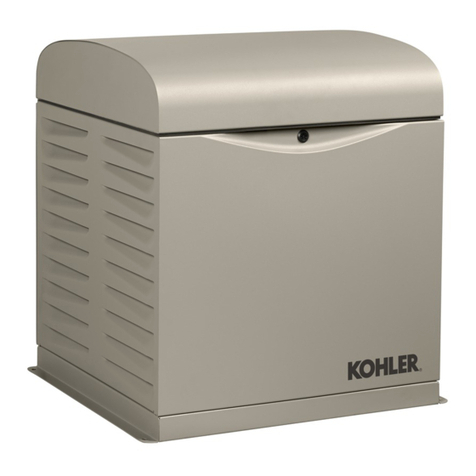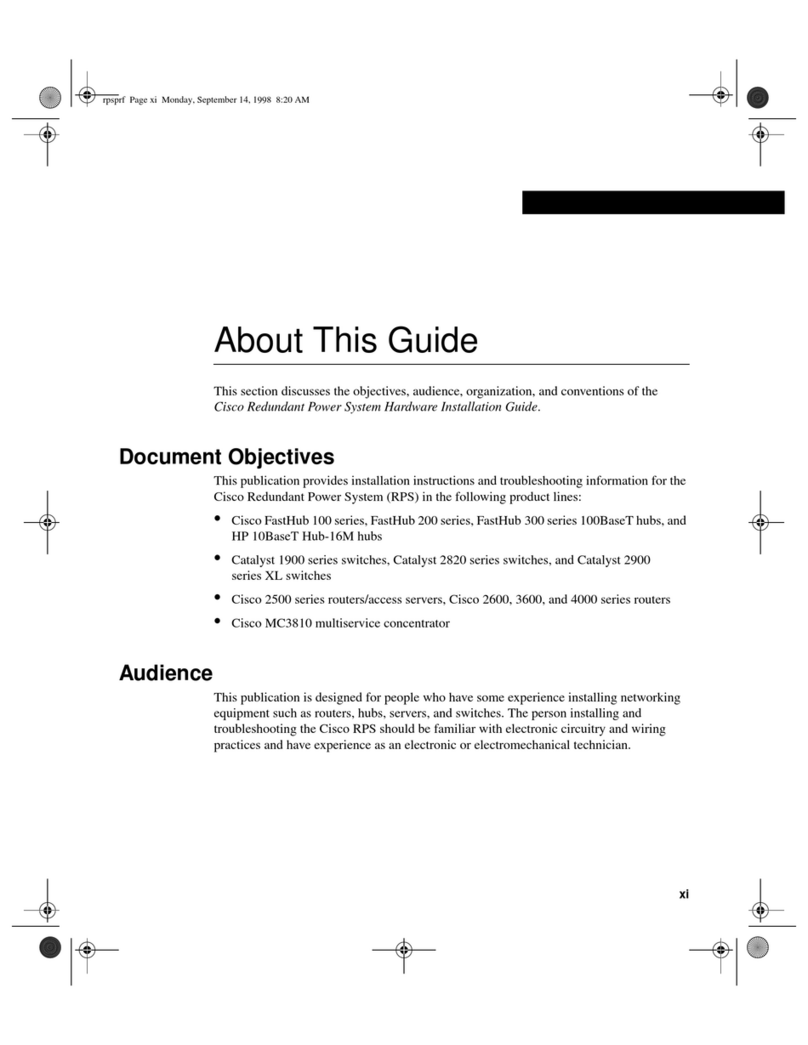Good Will Instrument SFG-2000 Series User manual

Synthesized Function Generator
SFG-2000/SFG-2100 Series
USER MANUAL
GW INSTEK PART NO. 82FG-21200MD
ISO-9001 CERTIFIED MANUFACTURER
This manual contains proprietary information, which is protected by
copyrights. All rights are reserved. No part of this manual may be
photocopied, reproduced or translated to another language without
prior written consent of Good Will company.
The information in this manual was correct at the time of printing.
However, Good Will continues to improve products and reserves
the rights to change specification, equipment, and maintenance
procedures at any time without notice.
Good Will Instrument Co., Ltd.
No. 7-1, Jhongsing Rd., Tucheng City, Taipei County 236, Taiwan.

Table of Contents
3
Table of Contents
SAFETY INSTRUCTIONS ................................................... 5
Safety Symbols......................................................... 5
Safety Guidelines ..................................................... 6
GETTING STARTED........................................................... 9
Technical background .............................................10
Lineup/Features......................................................12
Front Panel .............................................................13
Rear Panel...............................................................19
Set Up.....................................................................20
Operation Shortcuts ...............................................22
Default Setting Contents.........................................24
SINE/SQUARE/TRIANGLE WAVE .....................................25
Select the waveform................................................26
Set the Frequency....................................................26
Set the Duty Cycle (Square Waveform) ...................28
Set Amplitude .........................................................29
Set Offset................................................................30
TTL CMOS OUTPUT.........................................................31
Select the waveform................................................32
Set the Frequency....................................................32
Set the Duty Cycle...................................................33
Set Amplitude .........................................................34
SWEEP..............................................................................35
AMPLITUDE MODULATION ............................................37
SFG-2000 Series User Manual
4
FREQUENCY MODULATION........................................... 38
COUNTER INPUT............................................................ 40
STORE/RECALL SETTING................................................ 42
APPLICATION EXAMPLES ............................................... 44
Reference Signal for PLL System ............................44
Trouble-Shooting Signal Source.............................. 44
Transistor DC Bias Characteristics Test ..................45
Amplifier Over-Load Characteristic Test .................46
Amplifier Transient Characteristics Test ................. 46
Logic Circuit Test....................................................48
Impedance Matching Network Test ........................48
Speaker Driver Test.................................................49
Sweep for Speaker Test...........................................50
FAQ ................................................................................. 51
APPENDIX ....................................................................... 52
Error Messages ......................................................52
Specification...........................................................53
Declaration of Conformity ...................................... 55
INDEX ............................................................................. 56

SAFETY INSTRUCTIONS
5
SAFETY INSTRUCTIONS
This chapter contains important safety instructions that
you must follow when operating SFG-2000 series and
when keeping it in storage. Read the following before any
operation to insure your safety and to keep the best
condition for SFG-2000 series.
Safety Symbols
These safety symbols may appear in this manual or on
SFG-2000 series.
WARNING
Warning: Identifies conditions or practices that could
result in injury or loss of life.
CAUTION
Caution: Identifies conditions or practices that could
result in damage to SFG-2000 series or to other
properties.
Attention Refer to the Manual
Earth (ground) Terminal
SFG-2000 Series User Manual
6
Safety Guidelines
•Do not place any heavy object on SFG-2000 series.
•Avoid severe impacts or rough handling that leads to
damaging SFG-2000 series.
•Do not discharge static electricity to SFG-2000 series.
•Use only mating connectors, not bare wires, for the
terminals.
•Do not block or obstruct cooling vent opening.
•Do not perform measurements at power source and
building installation site (Note below).
•Do not disassemble SFG-2000 series unless you are
qualified as service personnel.
General Guideline
CAUTION
(Note) EN 61010-1:2001 specifies the measurement categories and
their requirements as follows. SFG-2000 series falls under category
II.
•Measurement category IV is for measurement performed at the
source of low-voltage installation.
•Measurement category III is for measurement performed in the
building installation.
•Measurement category II is for measurement performed on the
circuits directly connected to the low voltage installation.
Power Supply
WARNING
•Input voltage: 115/230V AC +10%, −15%, 50/60Hz
•The power supply voltage should not fluctuate more
than 10%.
•Connect the protective grounding conductor of the
power cord to earth ground, to avoid electrical shock.
Fuse
WARNING
•Fuse type: T0.125A/ 250V
•Only service personnel are allowed to access internal
fuse holders.
•Replace the fuse with the specified type and rating
only, for continued fire protection.
•Disconnect the power cord before fuse replacement.
•Make sure the cause of the fuse blowout is fixed
before fuse replacement.

SAFETY INSTRUCTIONS
7
Cleaning
SFG-2000 series
•Disconnect the power cord before cleaning.
•Use a soft cloth dampened in a solution of mild
detergent and water. Do not spray any liquid into
SFG-2000 series.
•Do not use chemicals or cleaners containing harsh
materials such as benzene, toluene, xylene, and
acetone.
•Location: Indoor, no direct sunlight, dust free, almost
non-conductive pollution (Note below)
•Relative Humidity: < 80%
•Altitude: < 2000m
•Temperature: 0°C to 40°C
Operation
Environment
(Note) EN 61010-1:2001 specifies the pollution degrees and their
requirements as follows. SFG-2000 series falls under degree 2.
Pollution refers to “addition of foreign matter, solid, liquid, or
gaseous (ionized gases), that may produce a reduction of dielectric
strength or surface resistivity”.
•Pollution degree 1: No pollution or only dry, non-conductive
pollution occurs. The pollution has no influence.
•Pollution degree 2: Normally only non-conductive pollution
occurs. Occasionally, however, a temporary conductivity caused
by condensation must be expected.
•Pollution degree 3: Conductive pollution occurs, or dry,
non-conductive pollution occurs which becomes conductive due
to condensation which is expected. In such conditions,
equipment is normally protected against exposure to direct
sunlight, precipitation, and full wind pressure, but neither
temperature nor humidity is controlled.
Storage
Environment
•Location: Indoor
•Relative Humidity: < 80%
•Temperature: −10°C to 70°C
SFG-2000 Series User Manual
8
Power cord for the United Kingdom
When using SFG-2000 series in the United Kingdom, make sure the power
cord meets the following safety instructions.
NOTE: This lead / appliance must only be wired by competent persons
WARNING: THIS APPLIANCE MUST BE EARTHED
IMPORTANT: The wires in this lead are coloured in accordance with the following code:
Green/ Yellow: Earth
Blue: Neutral
Brown: Live (Phase)
As the colours of the wires in main leads may not correspond with the colours marking
identified in your plug/appliance, proceed as follows:
The wire which is coloured Green & Yellow must be connected to the Earth terminal
marked with the letter E or by the earth symbol or coloured Green or Green & Yellow.
The wire which is coloured Blue must be connected to the terminal which is marked with
the letter N or coloured Blue or Black.
The wire which is coloured Brown must be connected to the terminal marked with the
letter L or P or coloured Brown or Red.
If in doubt, consult the instructions provided with the equipment or contact the supplier.
This cable/appliance should be protected by a suitably rated and approved HBC mains
fuse: refer to the rating information on the equipment and/or user instructions for details.
As a guide, cable of 0.75mm2 should be protected by a 3A or 5A fuse. Larger conductors
would normally require 13A types, depending on the connection method used.
Any moulded mains connector that requires removal /replacement must be destroyed by
removal of any fuse & fuse carrier and disposed of immediately, as a plug with bared wires
is hazardous if a engaged in live socket. Any re-wiring must be carried out in accordance
with the information detailed on this label.

GETTING STARTED
9
GETTING STARTED
This chapter describes SFG-2000 series in a nutshell,
including main features and front/rear/display
introduction. Follow the Set Up section to properly
install and power up SFG-2000 series.
SFG-2000 series
overview
Technical background ............................................ 10
Series lineup .......................................................... 12
Main features......................................................... 12
Panel
introduction
Front Panel ............................................................ 13
Rear Panel.............................................................. 19
Setup Tilt stand ............................................................... 20
Power up................................................................ 21
Recall the default setting ....................................... 21
Functionality check ................................................ 21
Quick reference Operation Shortcuts .............................................. 22
Default Setting Contents........................................ 24
SFG-2000 Series User Manual
10
Technical background
Traditional
function
generators
SFG-2000 series uses the latest Direct Digital Synthesis
(DDS) technology to generate stable, high resolution
output frequency. The DDS technology solves several
problems encountered in traditional function generators,
as follows.
Constant current circuit methodology
This analog function generating method uses a constant
current source circuit built with discrete components
such as capacitors and resistors. Temperature change
inside the generator greatly affects the components
characteristics which lead to output frequency change.
The results are poor accuracy and stability.
DDS
methodology
In DDS, the waveform data is contained in and
generated from a memory. A clock controls the counter
which points to the data address. The memory output is
converted into analog signal by a digital to analog
converter (DAC) followed by a low pass filter. The
resolution is expressed as fs/2k where fs is the frequency
and k is the control word, which contains more than
28bits. Because the frequency generation is referred to
clock signal, this achieves much higher frequency stability
and resolution than the traditional function generators.

GETTING STARTED
11
Block diagram DDS synthesizer consists of Phase accumulator
(counter), lookout table data (ROM), Digital-to-analog
converter (DAC), and Low-pass filter (LPF).
Frequency
Control Word (K)
28bit
Phase
Accumulator
28bit
Register
Table
ROM/RAM
Digital-Analog
Converter
Low-Pass
Filter
System Clock
(fs)
Output (fo)
28bit
12bit
The phase accumulator adds the frequency control word
K at every clock cycle fs. The accumulator output points
to a location in the Table ROM/RAM. The DAC
converts the digital data into an analog waveform. The
LPF filters out the clock frequency to provide a pure
waveform.
SFG-2000 Series User Manual
12
Lineup/Features
Series lineup
Features
Lineup Duty
cycle
Offset TTL/
CMOS
Sweep AM/
FM
Counter
SFG-2004 (4MHz) ●●●―――
SFG-2007 (7MHz) ●●●―――
SFG-2010 (10MHz) ●●●―――
SFG-2020 (20MHz) ●●●―――
SFG-2104 (4MHz) ●●●●●●
SFG-2107 (7MHz) ●●●●●●
SFG-2110 (10MHz) ●●●●●●
SFG-2120 (20MHz) ●●●●●●
Main features
Performance •High resolution using DDS and FPGA technology
•High frequency accuracy: 20ppm
•Low distortion: −55dBc
•High resolution 100mHz maintained at full range
Features •Wide output frequency range: 4, 7, 10, 20MHz
•Various output waveforms: Sine, Square, and Triangle
•TTL/CMOS output
•Variable DC offset control
•Output overload protection
•Store/recall: 10 settings
•Counter up to 150MHz high frequency (SFG-2100
series)
•AM/FM with internal and external (SFG-2100 series)
•Sweep mode with LINE and LOG (SFG-2100 series)
Input/Output
Terminals
•Frequency output
•TTL/CMOS output
•Counter input (SFG-2100 series)
•External modulation input (SFG-2100 series)

GETTING STARTED
13
Front Panel
SFG-2100 series front panel
Waveform
selection Key
Sweep Time
Speed Control
Log/Lin Selector
Cursor
Keys
Editing
Knob
Entry
Keys
Power
Switch
Sweep Span/
AM/FM
Control
Main
Display
Waveform
Output
TTL/CMOS
Output
Counter
Input
Amplitude/
Attenuation
Control
DC Offset
Control
CMOS
Amplitude
Control
SFG-2000 series front panel
Waveform
selection Key Cursor
Keys
Editing
Knob
Entry
Keys
Power
Switch
Main
Display
Waveform
Output
TTL/CMOS
Output
Amplitude/
Attenuation
Control
DC Offset
Control
CMOS
Amplitude
Control
SFG-2000 Series User Manual
14
Main display
(7 segment)
Shows the waveform frequency,
counter frequency, and duty cycle.
For SFG-2100 series only. In the
counter mode, indicates that the
leftmost digit (100MHz) is hidden
but contains a real number. For
counter details, see page40.
For SFG-2100 series only. In
counter mode, indicates gate
selection. For counter details, see
page40.
TTL
Indicates that the TTL or CMOS
output is enabled. For TTL/CMOS
details, see page31.
For square waveform only.
Indicates that the duty cycle is
being edited. For square waveform
details, see page25.
Indicates that the waveform output
is attenuated by −20dB. For
attenuation details, see page29.
For SFG-2100 series only. Indicates
that the sweep mode is activated.
For sweep details, see page35.
For SFG-2100 series only. Indicates
that FM or AM mode is enabled.
For modulation details, see page37
(AM) or page38(FM).
For SFG-2100 series only. Indicates
that the counter mode is enabled.
For counter details, see page40.
EXT
For SFG-2100 series only. Indicates
that the external modulation input
is used. For details, see page37
(AM) or page39(FM).

GETTING STARTED
15
Indicates the waveform shape: Sine,
Square, and Triangle. For details,
see page26.
Indicates that the Shift key is
pressed.
Indicates the output frequency:
MHz, kHz, or Hz.
Indicates the duty cycle unit. For
duty cycle details, see page28.
Waveform
selection key
WAVE
Selects the waveform shape: sine,
square, and triangle. For details,
see page26.
Entry keys Enters frequency, duty cycle, and various parameters.
1 2 MHz 1.2MHz
kHz
3 7 37kHz
54 Hz/% 45% (in duty cycle mode)
45Hz (in frequency mode)
DUTY
7Enter duty cycle (page28).
−20dB
8Attenuate the waveform output
by −20dB (page29).
TTL
9Enables TTL/CMOS output
(page31).
MHz Deletes previous entry
(backspace).
AM
Selects Amplitude Modulation
(page37).
FM
4Selects Frequency Modulation
(page38).
SWEEP
5Selects sweep mode (page35).
SFG-2000 Series User Manual
16
STORE
6Stores the parameter setting
(page42).
RECALL
3Recalls the parameter setting
(page42).
2Recalls the default parameter
setting (page43).
1Switches to counter mode
(page40).
0Accepts external modulation
signal (page37-AM) or
(page38-FM).
Editing knob
Increases (right turn) or decreases (left
turn) the frequency or duty cycle.
Cursor keys Moves the editing point left or right in
case of manual editing.
Waveform
output
OUTPUT
50 Ω
Outputs sine, square, and triangle
waveform. BNC terminal, 50Ωoutput
impedance.
TTL/CMOS
output
TTL/CMOS
OUTPUT
Outputs TTL or CMOS output
waveform, BNC terminal. For
TTL/CMOS mode details, see page31.
Counter input
Max AC 30Vrms
COUNTER
INPUT
Accepts signals for frequency counting.
BNC, AC 30Vrms maximum. For
counting mode details, see page40.

GETTING STARTED
17
Amplitude/
Attenuation
control
ADJ
−20dB
AMPL
Sets the sine/square/triangle waveform
amplitude. Turn left (decrease) or right
(increase).
When pulled out, attenuates the
sine/square/triangle waveform
amplitude by −20dB. The −20dB display
turns On.
For details, see page29.
DC offset
control
CAL
ADJ
OFFSET
-+
When pulled out, sets the DC
offset level for sine/square/triangle
waveform. Turn left (decrease) or right
(increase). The range is −5V ~ +5V, in
50Ωload.
For details, see page30.
CMOS
amplitude
control
TTL
CMOS ADJ
TTL/CMOS
5V 15V
This knob becomes effective when the
TTL/CMOS output is enabled (page31).
Selects TTL as output.
When pulled out, selects CMOS
as output. Sets the CMOS output level.
Turn left (decrease) or right (increase).
Sweep speed
control
Log/Linear
sweep selector
LIN
LOG
SWEEP TIME
SLOW FAST
This knob is available in SFG-2100
series only. It becomes effective in
sweep time mode.
Sets the sweep speed. Turn left (slow) or
right (fast). The range is 1 ~ 30 seconds.
For sweep details, see page35.
Selects linear sweep.
When pulled out, selects
logarithmic sweep.
SFG-2000 Series User Manual
18
Sweep span
control
AM/FM
modulation
control FM Dev
AM %
SWEEP SPAN
0MAX
This knob is available in SFG-2100
series only. It becomes effective in
sweep mode and AM/FM mode.
In Sweep mode: Sets the sweep span.
Turn left (narrow) or right (wide). The
range is 1 ~ 100. For sweep details, see
page36.
In AM/FM mode:
Sets the FM deviation (page38).
Turn left (decrease) or right (increase).
The range is over −50kHz ~ +50kHz,
centered at 1MHz.
When pulled out, sets the AM
depth (page37). Turn left (shallow) or
right (deep). The range is 0 ~ 100%.
Power switch
Turns the main power On/Off. For
power up sequence, see page20.

GETTING STARTED
19
Rear Panel
AC Voltage
Selector
AC Power
Input
External
Modulator
Input
External
Modulator Input
Accepts the modulation signal from external device.
BNC male connector, 10Vp-p maximum. SFG
automatically switches the modulation signal from
internal to external.
For modulation details, see page37 (AM) or page38(FM).
AC Power Input Accepts the AC power cord. 115 or 230V, 50/60Hz.
AC Voltage
Selector
Selects 115V or 230V for power source.
AC 100/110/120V →select 115V.
AC 220/230/240V →select 230V.
Improper selection might lead to internal fuse
blowout.
SFG-2000 Series User Manual
20
Set Up
Tilt stand Pull out the
handle sideways
and rotate it.
Place SFG
horizontally,
Or tilt stand.
Place the handle
vertically for
hand carry.

GETTING STARTED
21
Power up
1. Select the AC voltage on the rear
panel accordingly.
AC 100/110/120V→select 115V.
AC 220/230/240V→select 230V.
115V
2. Connect the power cord.
3. Push and turn On the main
power switch on the front panel.
4. The display shows model name and the last setup.
Example: SFG-2110, 500Hz triangle wave in sweep
mode and −20dB attenuation enabled
Recall the
default
setting
Press 2to recall the default setup. SFG shows
the message “done”, and outputs 10kHz sine wave.
Functionality
check
Connect SFG output to measurement device such as
oscilloscope and check the waveform characteristics.
SFG-2000 Series User Manual
22
Operation Shortcuts
Here are the collections of operation example shortcuts.
1. Press Wave key and select Sine WAVE
2. Press 2 + 5 + 0 + Hz/% key 250Hz/%
Sine wave 250Hz,
−20dB amplitude
OUTPUT
50 Ω
3. Press Shift + 8 key (−20dB)
...Or pull Amplitude knob
−20dB
8
or AMPL ADJ
1. Press Wave key and select
Triangle
WAVE
2. Press 8 + kHz key 8kHz
Tria ng le wa ve
8kHz,
+2V Offset
OUTPUT
50 Ω
3. Pull Offset knob (ADJ) and
Rotate
OFFSET ADJ
1. Press Wave key and select Square WAVE
2. Press 1 + MHz key 1MHz
3. Press Shift + 7 key (Duty) DUTY
7
Square Wave
1MHz, 45% duty
OUTPUT
50 Ω
4. Press 4 + 5 + Hz/% key
...Or Rotate the Scroll knob
45Hz/%
or
1. Press Shift + 9 key (TTL) TTL
9TTL
2. Press 1 + 0 + kHz key 10kHz
TTL Output 10kHz
TTL/CMOS
OUTPUT
3. Press TTL/CMOS knob (TTL) TTL/CMOS (TTL)
1. Press Shift + 9 key (TTL) TTL
9TTL
2. Press 1 + 0 + kHz key 10kHz
CMOS Out 10kHz,
10Vpp
TTL/CMOS
OUTPUT
3. Pull TTL/CMOS knob (CMOS)
and rotate
TTL/CMOS
(CMOS)

GETTING STARTED
23
1. Press Wave key and select Sine WAVE
2. Press 2 + 5 + 0 + Hz/% key 250Hz/%
3. Press Shift + 5 key (Sweep) SWEEP
5
4. Press SWEEP TIME knob (LIN)
and rotate
SWEEP TIME LIN
Linear Sweep,
1kHz start,
Sine wave 250Hz
OUTPUT
50 Ω
5. Press SWEEP SPAN knob and
rotate
SWEEP SPAN
1. Press Wave key and select
Triangle
WAVE
2. Press 8 + kHz key 8kHz
3. Press Shift + 5 key (Sweep) SWEEP
5
4. Pull SWEEP TIME knob (LOG)
and rotate
SWEEP TIME
LOG
Log Sweep,
10kHz start,
Tri angle wave
8kHz
OUTPUT
50 Ω
5. Press SWEEP SPAN knob and
rotate
SWEEP SPAN
1. Press Wave key and select Sine WAVE
2. Press 1 + 0 + kHz key 10kHz
3. Press Shift + .(dot) key (AM)
AM
AM, Internal,
50% modulation,
sine wave 10kHz
OUTPUT
50 Ω
4. Pull SWEEP SPAN knob (AM
%) and rotate
SWEEP SPAN
1. Press Wave key and select Sine WAVE
2. Press 1 + MHz key 1MHz
3. Input external modulation signal
(EXT sign appears)
EXT
4. Press Shift + 4 key (FM) AM
FM, External,
50% deviation,
sine wave 1MHz
OUTPUT
50 Ω
5. Push SWEEP SPAN knob (FM
Dev) and rotate
SWEEP SPAN
(FM Dev)
SFG-2000 Series User Manual
24
1. Press Shift + 1 (Counter)
1
Counter input,
sine wave 1MHz
COUNTER
INPUT
2. The Gate sign flashes when
counted
1. Press Shift + 6 (Store) STORE
6
2. The “Store” sign appears
3. Enter the memory number (1 ~
10)
Store the setting
to memory No.1
4. The “done” sign appears
1. Press Shift + 3 (Recall) RECALL
3
2. The “Recall” sign appears
3. Enter the memory number (1 ~
10)
Recall the setting
from memory
No.1
4. The “done” sign appears
Default Setting Contents
Recall default
settings
2
Press the shift key, then 2 to recall the
default setting. The “done” message
appears, followed by display update.
Wave type Sine wave
Frequency 10.0000kHz
TTL/CMOS Disabled
−20dB Disabled
Modulation Disabled
Sweep mode Disabled

SINE/SQUARE/TRIANGLE WAVE
25
SINE/SQUARE/TRIANGLE
WAVE
Select waveform Select the waveform............................................... 26
Set frequency Enter frequency...................................................... 26
Edit frequnency...................................................... 27
Set duty cycle
(for square
wave)
Enter duty cycle...................................................... 28
Edit duty cycle........................................................ 28
Set amplitude Normal output ....................................................... 29
Attenuate by −20dB ............................................... 29
Set offset Activate offset........................................................ 30
Adjust offset .......................................................... 30
Limitation .............................................................. 30
SFG-2000 Series User Manual
26
Select the waveform
Sine / Square
/ Triangle
Press WAVE key repeatedly. The corresponding icon
appears on the display.
Sine waveform.
Square waveform.
Triangle waveform.
OUTPUT
50 Ω
The waveform comes out from the main
terminal.
10Vp-p maximum (50Ωload)
20Vp-p maximum (no load)
Set the Frequency
Enter the waveform frequency using the numerical keys.
1 2 MHz 1.2MHz
Enter
frequency
kHz
3 7 37kHz
54 Hz/% 45Hz
MHz Delete a number
(backspace)
Triangle waveform frequency is limited to
maximum 1MHz. When the input exceeds it, the
following message (Freq-Err2) appears and forces the
frequency to 1MHz.
For full error message list, see page52.

SINE/SQUARE/TRIANGLE WAVE
27
Edit
frequnency
Left cursor key moves the active
cursor left.
Right cursor key moves the active
cursor right.
Turn the editing knob left to decrease
the frequency.
Turn the editing knob right to increase
the frequency.
SFG-2000 Series User Manual
28
Set the Duty Cycle (Square Waveform)
The duty cycle setting is not available in sine/triangle waveform.
DUTY
7Press the Shift key, then 7 to
enter duty cycle editing mode.
The duty sign appears on the
display.
Enter duty
cycle
The default value is 50%.
The settable range is 20% ~
80%, 2Hz ~ 1MHz.
54 Hz/% Use numerical keys to enter
value.
Example: 45%
MHz Delete a number (backspace)
Edit duty
cycle
The editing knob changes the
value, and the cursor keys
moves the active digit (same as
entering frequency).
When inactive for 5 seconds, the display automatically
goes back to previous mode (frequency view).
Setting duty cycle (press
DUTY
7) is not available
when sine or triangle waveform is activated. The
following message appears.
For full error message list, see page52.

SINE/SQUARE/TRIANGLE WAVE
29
Set Amplitude
Normal
output
ADJ
−20dB
AMPL
Turn the Amplitude knob right
(increase) or left (decrease).
The range is 10Vpp for 50Ωload.
Attenuate by
−20dB
Sine/square/triangle waveform can be attenuated by
−20dB, in two ways: −40dB altogether.
Method1
Pull out the Amplitude knob. The
output amplitude is attenuated by
−20dB (no display sign).
−20dB
8
Method2
Press the shift key, then 8. The output
amplitude is attenuated by −20dB. The
−20dB sign appears on the display.
SFG-2000 Series User Manual
30
Set Offset
SFG can add or delete offset to the sine/square/triangle
waveform, thus changing the waveform vertical position.
Use the OFFSET knob.
Activate
offset
Pushed: Offset Off
Pulled: Offset On
Adjust offset
CAL
ADJ
OFFSET
-+
Turn the knob right (higher position)
or left (lower position).
The range is −5V ~ +5V for 50Ω
load.
Limitation
Note that the output amplitude, including the offset, is
still limited to:
−5 ~ +5V (50Ωload)
−10 ~ +10V (no load)
Therefore excessive offset leads to peak clip as below.
Positive peak
clip (50Ω) +5V
-5V Offset
Clipped
Negative peak
clip (50Ω)
+5V
-5V
Offset
Clipped

TTL CMOS OUTPUT
31
TTL CMOS OUTPUT
Select waveform Select the waveform............................................... 32
Set frequency Enter frequency...................................................... 32
Edit frequency........................................................ 33
Set duty cycle Enter duty cycle...................................................... 33
Edit duty cycle........................................................ 34
Set amplitude Set Amplitude ........................................................ 34
SFG-2000 Series User Manual
32
Select the waveform
TTL/CMOS TTL
9
TTL
Press Shift key, then 9. The TTL sign
appears on the display.
The TTL/CMOS output is always On
when the square wave is
activated.
TTL
CMOS ADJ
TTL/CMOS
5V 15V
Push/pull the TTL/CMOS knob to
select the waveform.
Pushed: TTL is selected as
output.
Pulled: CMOS is selected as
output.
TTL/CMOS
OUTPUT
The waveform comes out from the
TTL/CMOS terminal.
TTL: ≥3Vp-p (fixed)
CMOS: 4V±1Vp-p ~ 15±1Vp-p
Set the Frequency
Enter the waveform frequency using the numerical keys.
1 2 MHz 1.2MHz
Enter
frequency
kHz
3 7 37kHz
54 Hz/% 45Hz
MHz Delete a number
(backspace)

TTL CMOS OUTPUT
33
Edit
frequency
Left cursor key moves the active
cursor left.
Right cursor key moves the active
cursor right.
Turn the editing knob left to decrease
the frequency.
Turn the editing knob right to increase
the frequency.
Set the Duty Cycle
DUTY
7Press the Shift key, then 7 to
enter duty cycle editing mode.
The duty sign appears on the
display.
Enter duty
cycle
The default value is 50%.
The settable range is 20% ~
80%, 2Hz ~ 1MHz.
54 Hz/% Use the numerical keys to enter
value. Example: 45%
MHz Delete a number (backspace)
SFG-2000 Series User Manual
34
Edit duty
cycle
The editing knob changes the
value, and the cursor keys
moves the active digit (same as
entering frequency).
When inactive for 5 seconds, the display automatically
goes back to previous mode (frequency view).
Set Amplitude
CMOS
waveform
TTL
CMOS ADJ
TTL/CMOS
5V 15V
Use the TTL/CMOS knob.
Pushed: selects TTL output
with fixed amplitude, min. 3Vp-p.
Pulled: selects CMOS
output, amplitude range 4V±1Vp-p ~
15±0.5Vp-p.
Turn the knob right (increase
amplitude) or left (decrease amplitude).

SWEEP
35
SWEEP
SFG can add sweep to the waveform output, a convenient tool for measuring
the frequency response of the DUT.
•Sweep function applies only to SFG-2100 series.
•Sweep and Modulation (page37) cannot be used together.
Activate
sweep
1. Output the waveform. Sine/Triangle/Square
(page25) or TTL/CMOS (page31).
2. Press the Shift key, then 5 (Sweep).
SWEEP
5
3. Sweep is activated and the sign appears on the
display.
When the sweep is activated, the duty cycle of
Square/TTL/CMOS wave is fixed to 50%.
Select
Log/Lin
Sweep
LIN
LOG
SWEEP TIME
SLOW FAST
Logarithmic Sweep:
Pull the SWEEP TIME knob.
Linear Sweep:
Push the SWEEP TIME knob.
SFG-2000 Series User Manual
36
Sweep time sets the time it takes for a single sweep from
the start frequency to the end frequency.
Rotate the SWEEP TIME knob, right (fast) or left
(slow).
SWEEP TIME
SLOW FAST
Set Sweep
Time
Range 1 ~ 30 seconds
Note: If the sweep time becomes too long, the stop
frequency might reach the rating (4, 7, 10, or 20MHz). In
this case, the frequency stays at the rating to the end.
Sweep span sets the frequency width of the sweep.
The current output frequency becomes the start
frequency.
Rotate the SWEEP SPAN knob, right (wide) or left
(narrow).
SWEEP SPAN
0MAX
Set Sweep
Span
Range 1 ~ 100 frequency ratio
Note: In order to get the maximum span (frequency
ratio), set the sweep time to a sufficient length (not too
short).

AMPLITUDE MODULATION
37
AMPLITUDE MODULATION
•AM applies only to SFG-2100 series.
•Modulation and Sweep (page35) cannot be used together.
Activate AM
1. Output the waveform, Sine/Triangle/Square
(page25).
2. Press the Shift key, then Dot (AM). AM is activated
and the sign appears on the display.
AM
AM %
SWEEP SPAN
0MAX
1. Pull the SWEEP SPAN knob (AM
%).
2. Turn the knob left (shallow) or
right (deep).
Set AM depth
Range 0 ~ 100%
SFG-2000 series uses an internal 400Hz sine wave as the
default modulating signal.
1. Connect the modulating signal to the rear panel
terminal.
2. Press the Shift key, then 0 (EXT MOD). External
modulation is activated.
0EXT
Use external
modulating
signal
Frequency Range DC ~ 1MHz
SFG-2000 Series User Manual
38
FREQUENCY MODULATION
•FM applies only to SFG-2100 series.
•Modulation and Sweep (page35) cannot be used together.
Activate FM
1. Output the waveform. Sine/Triangle/Square
(page25) or TTL/CMOS (page31).
2. Press the Shift key, then 4 (FM). FM is activated and
the sign appears on the display.
FM
4
When FM is activated, the duty cycle of
Square/TTL/CMOS wave is fixed to 50%.
The output frequency becomes the Center Frequency.
FM Dev
AM %
SWEEP SPAN
0MAX
1. Push the SWEEP SPAN knob
(FM Dev).
2. Turn the knob left (shallow) or
right (deep).
Set FM
deviation
Deviation
Range
0 ~ ±50kHz, centered at 1MHz

FREQUENCY MODULATION
39
When the deviation is added to the center frequency, the
result must be smaller than the rating frequency.
Center Frequency + Deviation ≤
Rating(4,7,10,20MHz)
When this rule is violated, the “Freq-Err3” error
message appears and the FM setting will be cancelled.
For more error message details, see page52.
Center frequency (=Output frequency) must be set
within this range.
SFG-2104 300kHz ~ 3.7MHz
SFG-2107 300kHz ~ 6.7MHz
SFG-2110 300kHz ~ 9.7MHz
SFG-2120 300kHz ~ 19.7MHz
SFG-2000 series uses an internal
400Hz sine wave as the default
modulating signal.
1. Connect the modulating signal to
the rear panel terminal.
2. Press the Shift key, then 0 (EXT
MOD). External modulation is
activated.
0EXT
Use external
modulating
signal
Frequency
Range
1kHz (fixed)
SFG-2000 Series User Manual
40
COUNTER INPUT
Counter input applies only to SFG-2100 series.
1. Connect the signal input to the Counter input
terminal. Press Shift key, then 1 (Counter).
1
2. EXT and COUNT sign appear on the display.
EXT
Activate
counter
COUNTER
INPUT
3. The display shows the input signal frequency.
EXT
4. The GATE sign flashes when the gate condition is
met.
Range 0 ~ 150MHz
Resolution 100nHz for 1Hz input,
0.1Hz for 100MHz input
Set the gate
time
Gate time sets the display update rate and counter
resolution. These two parameters are in trade-off.
Short gate time = faster update, coarse resolution
Long gate time = slower update, fine resolution
To change the gate time, turn the
editing knob right (increase) or left
(decrease).
This manual suits for next models
1
Table of contents
Other Good Will Instrument Portable Generator manuals
Popular Portable Generator manuals by other brands
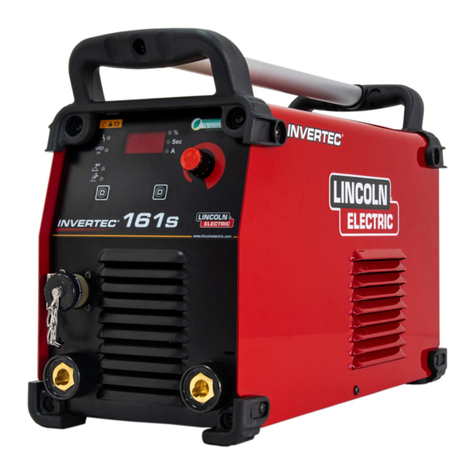
Lincoln Electric
Lincoln Electric INVERTEC 161S Operator's manual
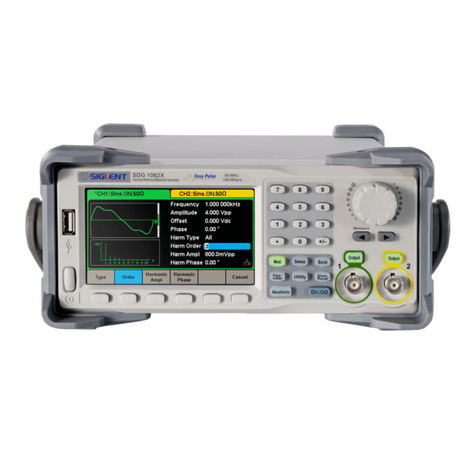
SIGLENT TECHNOLOGIES
SIGLENT TECHNOLOGIES SDG1000X Series Service manual
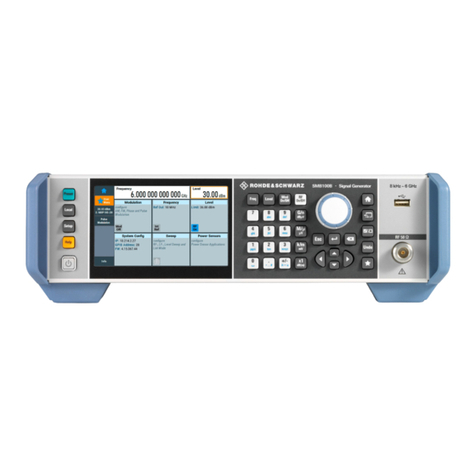
Rohde & Schwarz
Rohde & Schwarz SMB100B Getting started
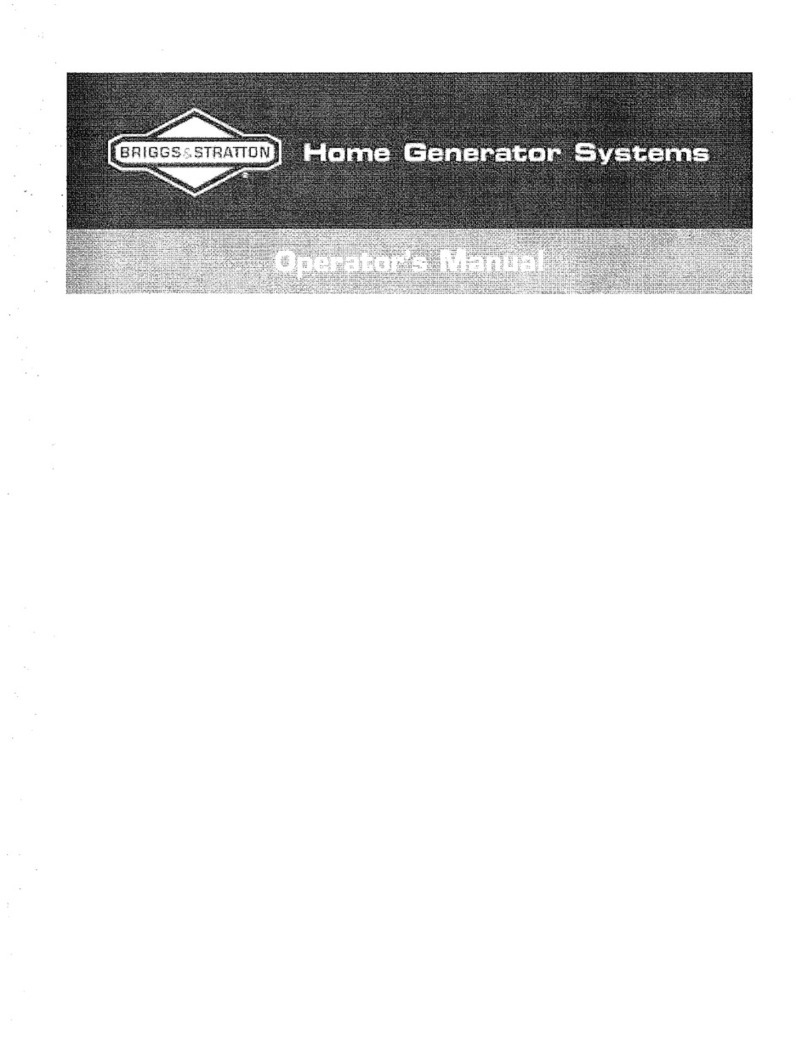
Briggs & Stratton
Briggs & Stratton 040336-00 Operator's manual
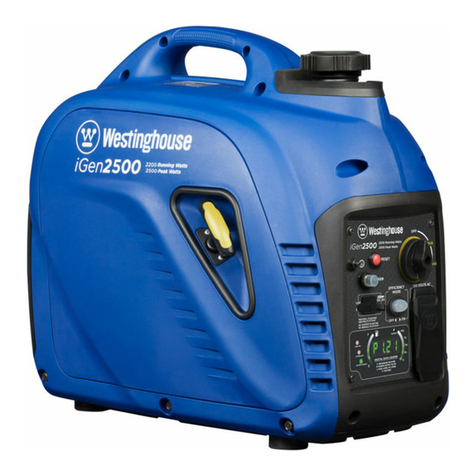
Westinghouse
Westinghouse iGen2500 Guide

DUROMAX
DUROMAX Dual Fuel XP1200IS user manual

